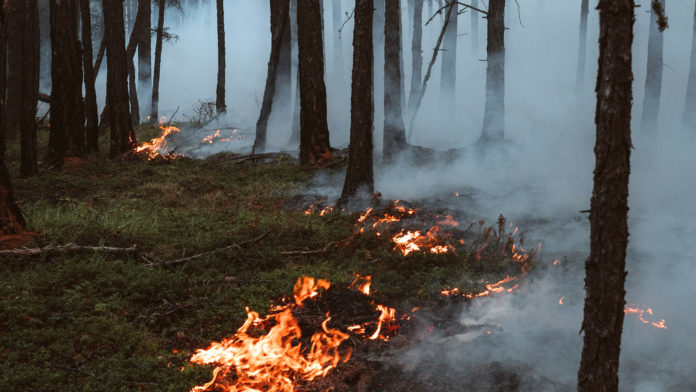Climate change is at the top of the list of items that Canadians voters say is the single most important issue that will drive their vote in the upcoming federal election.
This massive global crisis demands a long-term bipartisan response. In particular, wildfires have emerged as a major threat, with hotter and drier summers creating the conditions for fires to spread through forests with unprecedented reach.
The coordinated effort required to tackle this issue could benefit from lessons learned from managing the COVID-19 pandemic. It would take a huge amount of planning and work, but it’s possible to ‘vaccinate’ our forests against wildfires before they reach ‘herd immunity’ on their own.
Just like vaccines, there’s the controlled way to make wildfires less infectious and easier to contain, and then there’s the hard way that would burn through a devastating area of our forests in the process.
An action plan was put forward in a white paper spearheaded by researchers at the University of British Columbia Okanagan, and co-authored by collaborators from academic institutions, the Indigenous community, government, and industry.
Forests become vulnerable to wildfires when they are dry and full of fuel to burn. Climate change, western fire suppression, and monocultures of logging-friendly trees have made our forests easier to burn.
Patches that have less fuel or are more wet are harder to burn through, and these act like a natural form of wildfire immunity that contain fires and make them easier to suppress.
Indigenous fire practices actively create this mix of environments, using frequent and low-intensity fires to manage landscapes during wet seasons. This removes fuel and converts areas to more fire-resistant grasslands, shrublands, wet meadows, aspen forests, and woodlands. These cultural fires have even been found to increase biodiversity of everything from microbes to plants and animals.
This proactive burning acts like a vaccine, creating areas that are resistant to fire because they’ve been exposed before. Doing this strategically minimizes harm.
The unfortunate truth is that if we stay on our current track, wildfires will only become more common and more intense, and they will spread further as we struggle to control them. Natural landscapes will reach a form of ‘herd immunity’ by force, with widespread and destructive fires converting forests into more fire-resistant areas. The authors expect this to happen in just a few decades.
Wildfires threaten the economy, our communities, and even our health. Western Canada is on track to see hundreds to thousands of premature deaths due to wildfire smoke every year. Tens to hundreds of megatonnes of greenhouse gas emissions will be released by the fires, further fueling climate change. Billions of dollars will be spent on increased fire suppression and indirect fire costs.
But it’s possible to combine tactics like thinning, species conversion, prescribed fire, restoration projects, and modified suppression tactics over the next 5-10 years to avoid this fate. This is a long-term commitment that needs bipartisan support.
To make it feasible, we need investments to process billions of tonnes of wildfire fuels. This scale is needed to harvest and convert those fuels into usable products, and we need committed funding for manufacturing and workforce infrastructure now.
Just like the pandemic, the world needs concrete plans that attack climate change with focus and urgency. In this literal trial by fire, every resource will be needed to challenge it.





































